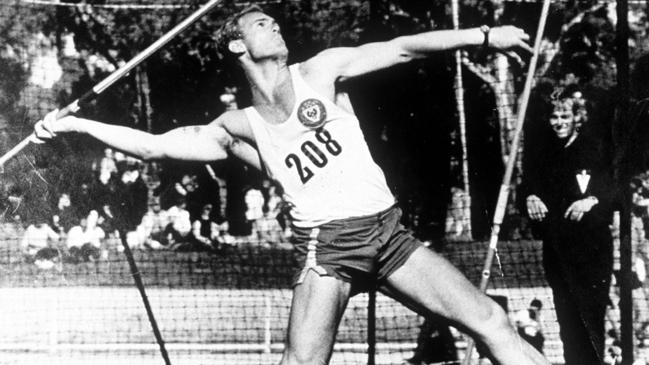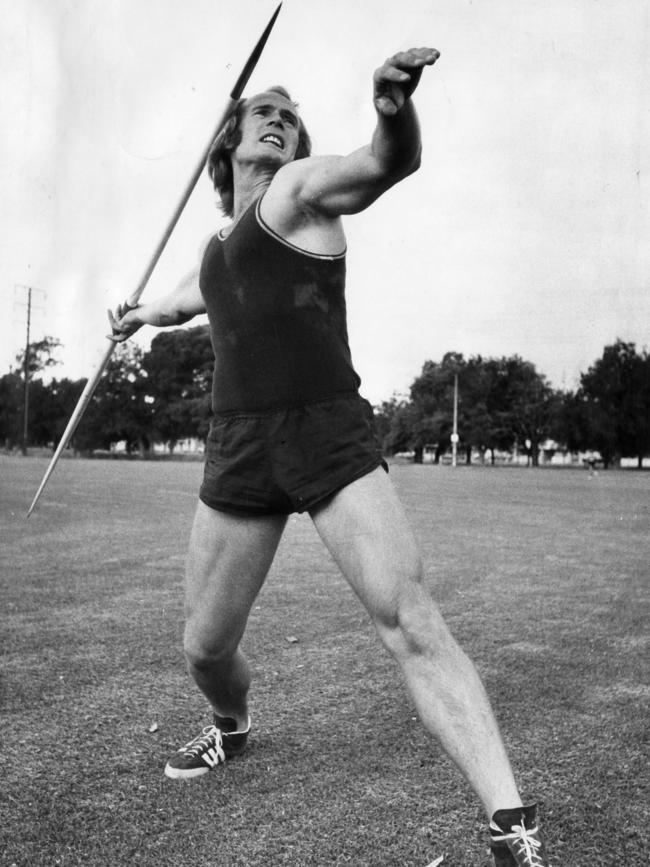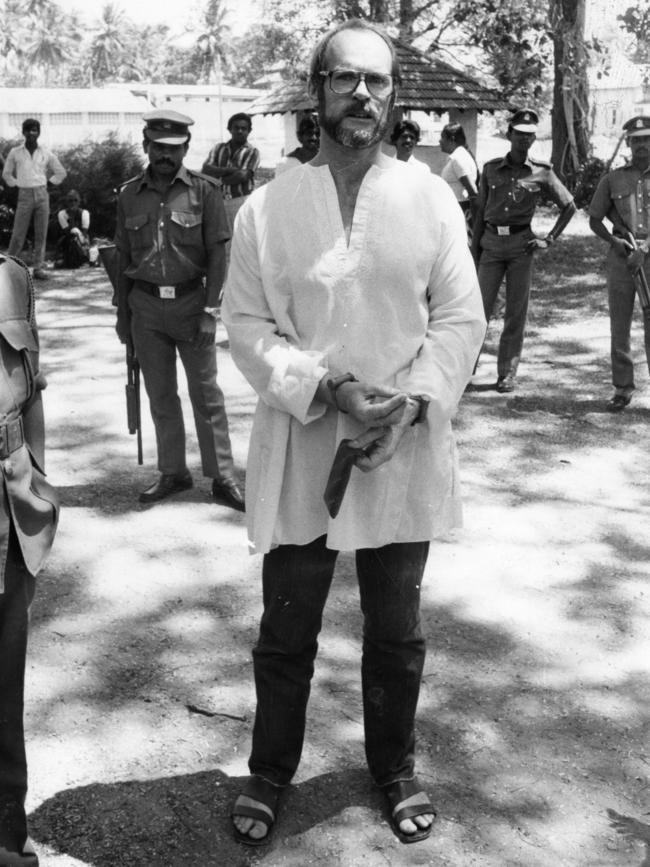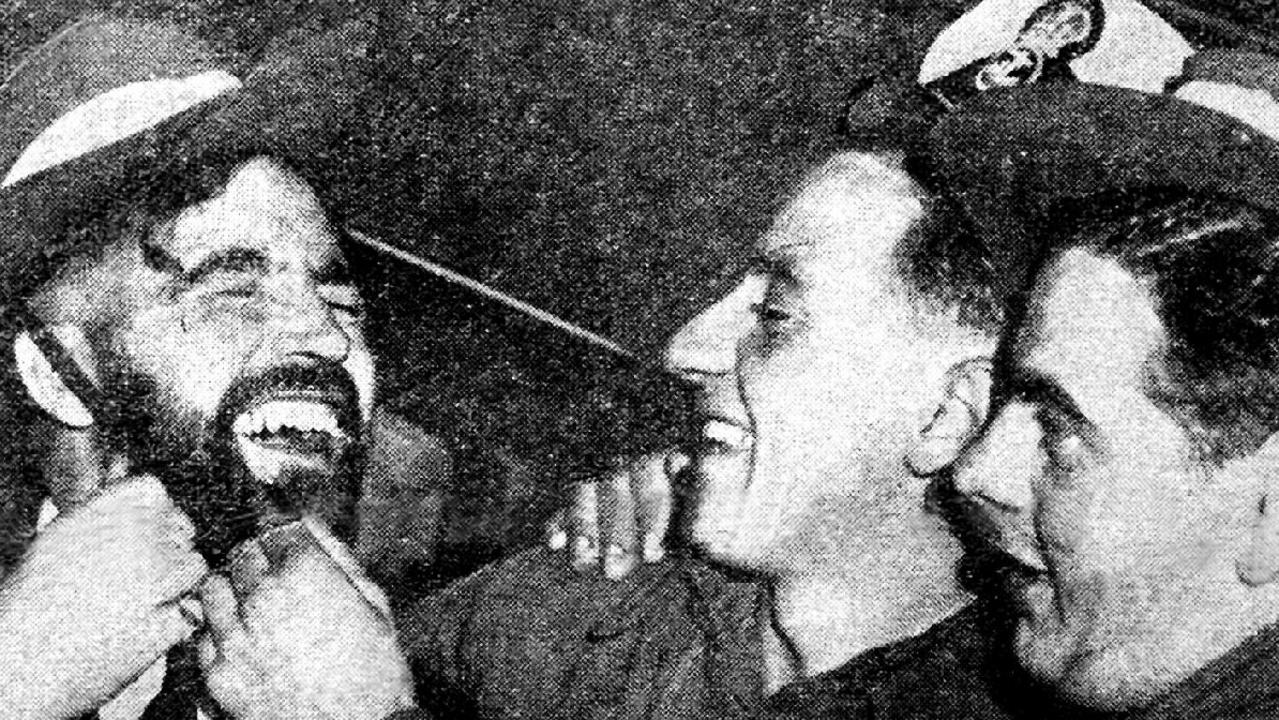Rex Jory: Reginald Speirs’ flight is one of the most astonishing examples of illegal bravado and sheer audacity in SA history
Whatever you think of him, Reginald Spiers’ flight from London to Adelaide – smuggled in a wooden box – still makes for an astonishing tale of bravado and audacity, writes Rex Jory.

Opinion
Don't miss out on the headlines from Opinion. Followed categories will be added to My News.
On Monday, June 2, 1987 – 36 years ago yesterday – former Australian javelin champion, Reginald James Spiers, was sentenced to death in a Sri Lankan court for possessing heroin and hashish.
It’s a case which revives memories of one of the most astonishing examples of illegal bravado and sheer audacity in South Australian history.
It ranks with poet Adam Lindsay Gordon’s daring horsemanship at Mt Gambier’s Blue Lake in July 1864.
Riding his horse Red Lancer, Gordon leapt a high fence on the lake’s edge and landed on a 1.8m-wide ledge. One slip and he would have fallen 60m to his death.
There was a touch of Ned Kelly in Spiers. Depending on your point of view, he was either a scallywag or a hardened criminal. Make up your own mind.
Spiers was sentenced to death in 1987 but beat the rap on appeal. He was later jailed in Adelaide for drugs-related crimes.
Spiers represented Australia in the 1962 Commonwealth Games but failed to make the 1964 Tokyo Olympic team. He went to Britain in the hope of somehow qualifying for the Tokyo Games but failed.
Broke, disheartened and homesick, Spiers took a job at London’s Heathrow Airport where he dreamt up a bizarre way to get back to Australia for nothing.
He later explained to the BBC: “I worked in the export cargo section so I knew about cash on delivery with freight. I’d seen animals come through all the time and I thought, ‘If they can do it, so can I’.”


So, he asked a friend, John McSorley, to make him a stout wooden crate measuring 1.5m x 0.9m x 0.75m – the size of a small dog kennel.
The box allowed Spiers to sit up straight-legged or lie down with his knees bent. It was fitted with straps that he could hang on to during movement. Each end could be opened from the inside.
Spiers labelled the box as if it carried a load of paint, addressed it to a fictitious Mr Graham in Perth and specified cash-on-delivery payment.
“I just got in the thing and went,” he said. “What was there to be frightened of? I’m not frightened of the dark so I just sat there.”
With a torch, blanket, pillow, canned food and two plastic bottles (one with water, the other for weeing), Spiers was loaded on to a Perth-bound Air India flight at Heathrow on October 17, 1964.
The flight was delayed for 24 hours at Heathrow because of fog and then the crate was transferred to another flight on a stopover in India. During the flight and in India, Spiers was able to crawl out of his crate.
But the flight eventually reached Perth and he was still in good shape.
“I knew they would take the box to a bond shed,” Spiers said. “When they put me in the shed, I got out straight away. There were cartons of beer there. I don’t drink but I whipped a beer out and had a drink.”
Spiers found some tools and cut himself out of the shed, entered the terminal, pretended to be a normal passenger and used his passport to get through Immigration.
“There was no security. I put on a suit out of my bag so I looked cool, jumped through the window, walked out on the street and thumbed a ride into town. Simple as that,” he said.
He made his way to Adelaide and was reunited with his wife and daughter. But he forgot to notify his mate, John McSorley, in London that he was safe.
McSorley tipped off a journalist that Spiers might be lost or had perished in his crate.
He was tracked down in Adelaide and his story of bravado went around the world.
Spiers was later involved in several drug-related crimes in three continents and spent time in prison.
But it was his time in the wooden crate which gained him the most notoriety.
Now in his 70s, Spiers lives almost anonymously in Adelaide.


